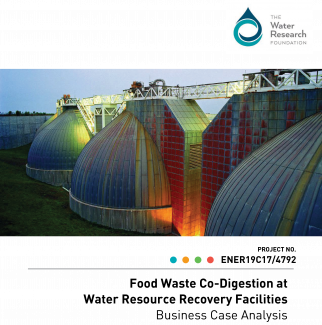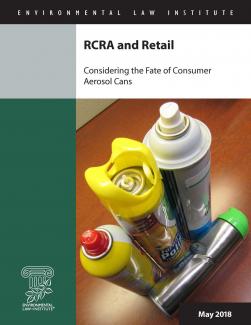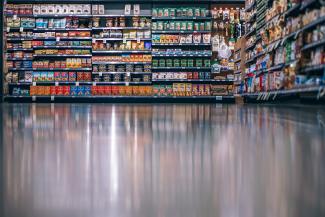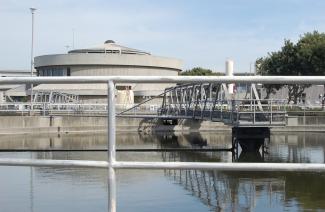New Report Identifies Opportunities for Successful Co-Digestion at Water Resource Recovery Facilities
(Washington, D.C.): Diverting food waste feedstocks like fats, oils and grease, food scraps, and food processing residuals to anaerobic digestion at water resource recovery facilities (WRRFs) can provide significant benefits to WRRF finances, as well as to our environment and community well-being; however, WRRFs face a number of hurdles that leave this potential sustainability strategy largely untapped. Fewer than 1 in 10 WRRFs use anaerobic digestion to process wastewater solids, and only 1 in 10 of these are co-digesting high-strength organic wastes.
Food Waste Co-Digestion at Water Resource Recovery Facilities: Business Case Analysis

Co-digestion of food wastes with wastewater solids at water resource recovery facilities (WRRFs) can provide financial benefits to WRRFs as well as a broad range of environmental and community benefits. Co-digestion is a core element of the wastewater sector’s “Utility of the Future” initiative, which envisions a new business approach for pioneering WRRFs to create valuable energy and nutrient products via the recovery and reuse of residuals from the wastewater treatment process.
The Nashville Farmers’ Market Helps Customers Recycle Food Waste
Your next visit to the Nashville Farmers’ Market on Rosa Parks Boulevard will include six new items. No, not necessarily farm-fresh peaches or asparagus, though those will likely be there too, depending on when you arrive. The market is introducing six custom-designed receptacles that allow customers to sort their trash. . . .
Pollution Prevention and Rethinking "Waste"
Congressional Conference on the Farm Bill: What is at Stake for Food Waste?

With the U.S. Senate voting on July 31 to join the House of Representatives in conference on their respective Farm Bills, the two houses face major challenges to resolve the wide gaps in many elements. Reauthorized every 5 years or so, the Farm Bill is a comprehensive piece of legislation that affects all facets of the American food supply.
RCRA and Retail: Considering the Fate of Consumer Aerosol Cans

Minimizing waste generation includes diverting waste streams to reuse and recycling as well as recapturing materials. In devising new approaches for the management of materials and the diversion of wastes under RCRA, federal regulators can draw on their knowledge and years of experience working with particular sectors and materials. In the retail sector, managing discarded and returned consumer aerosol cans can hit the "tripwire" for RCRA ignitability, requiring their management as hazardous waste.
Paper or Bio-Plastic? Innovative Packaging to Prevent Food Loss

It’s well known that up to 40% of food in the United States goes to waste. As a result, a large portion of the blue water utilized in agricultural irrigation ends up back in the ground—not in aquifers, but in landfills. While the majority of food waste in the United States is attributable to the disposal of safe, edible foods, a considerable amount of food that goes to landfill is “lost” due to spoilage or food being otherwise deemed unfit for human use.
Sustainable Business Models for Codigesting Food Waste

The wastewater sector’s “Utility of the Future” (UOTF) initiative envisions the sector’s transformation from managing waste to recovering and recycling valuable resources, thereby creating financial benefits for utilities, as well as environmental and economic development benefits for communities.

